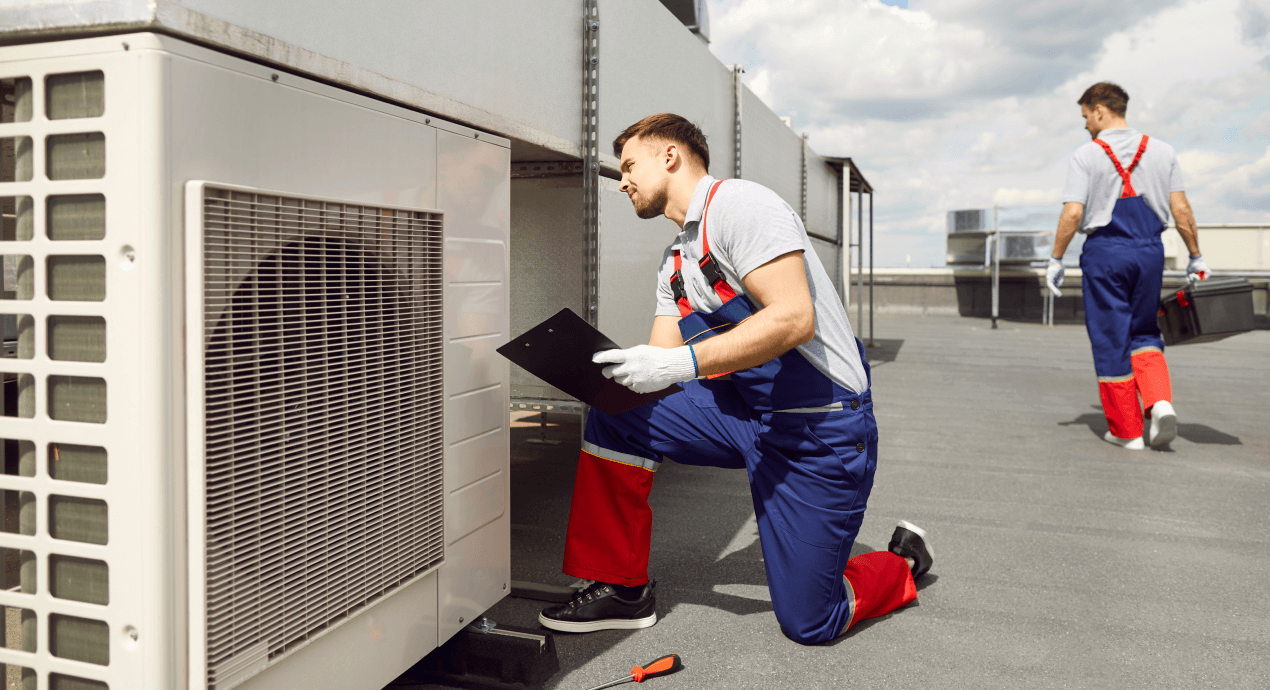
Contemplating coverage?
Subscribe to receive our emails & get
$200 OFF!
Have questions?
Call us: (833) 544-8273


Written By Rachel Cherem
You can think of your HVAC system as the lungs of your home. Beyond keeping your home at a comfortable temperature, your HVAC system ensures adequate ventilation and maintains healthy air quality.
You don’t need to be too fussy with your HVAC equipment, but you should periodically check on the system’s component parts and appliances to keep tabs on their overall health. If you’re able to diagnose mechanical issues or problems with your ductwork early on, you can often prevent disruptive HVAC malfunctions and avoid costly repair bills.
It’s best to perform an HVAC inspection twice annually. Ideally, a professional HVAC technician will check your system once in the spring and once in the fall. This will ensure your system is in good shape ahead of the heating and cooling seasons, which are when you tend to demand the most from your HVAC appliances.
You can also perform more frequent DIY inspections. Spot-check your HVAC appliances every three months for obvious signs of damage, mold, and wear and tear. Replace the air filters, wipe dust from the registers, and ensure vents are free of any obstructions.
Note that if you’re building a new home or replacing your existing HVAC system, many cities require an HVAC inspection after installation to ensure all components are working properly and the system is up to code.
Ahead of your scheduled inspection, take a few moments to prepare your home and HVAC system to help expedite the check-up. Follow this HVAC inspection checklist:
1. Write down questions or concerns.To ensure nothing gets overlooked during your inspection, jot down any issues you may have noticed during your DIY inspections or day-to-day use of your heating, air conditioning, or HVAC fans.
2. Clear the area around your HVAC equipment.Ensure your HVAC tech has easy access to your appliances. Remove any boxes or other belongings that may be blocking equipment in the basement, attic, or crawl space. If your HVAC system has an outdoor unit, brush away any debris.
3. Gather appliance documentation and service logs.It will be helpful for your HVAC technician to see the records of your system’s service. This can better inform diagnostics, troubleshooting, and whether any parts need to be serviced, cleaned, or replaced.
4. Get simple maintenance tasks out of the way.You could save a bit of time on your inspection by taking care of some basic maintenance jobs ahead of time. Clean or replace any air filters, check whether the thermostat batteries need to be replaced, and dust vents, registers, and evaporator coils. Getting the basics out of the way will help you and your HVAC tech make the most out of your inspection time.
The most common type of HVAC system in American homes is the standard split system. A thorough inspection entails checking the overall system for proper functionality and studying the ductwork, heating and cooling units, and other component parts for signs of wear and tear or other kinds of damage. Here are the specifics of how an HVAC technician will carry out a proper inspection.
Whether you’re shadowing a professional HVAC technician or checking up on your system on your own, you should keep an eye out for some common problems that could point to a faulty component somewhere within the system.
You can monitor your HVAC system’s general health and perform some basic maintenance tasks periodically, but you should hire a professional to conduct a thorough inspection twice per year. You should also enlist the help of the pros when:
Standard inspections can include thorough checks of all HVAC appliances and component parts, air quality assessments, poisonous gas detection, mold and damage inspections, refrigerant checks, filter replacements, thermostat calibration, and confirmation of proper system functionality.
Your HVAC inspection cost is dependent on the size of your home, type of system, and local cost of living. On average, yearly HVAC maintenance costs range from $200 to $500, but prices will skew higher for large homes in areas with high costs of living.
The layperson can perform some basic inspection and maintenance tasks, such as cleaning registers and replacing air filters, but you should hire a professional to handle anything involving refrigerant, electrical components, gas, or system calibration.
Poor heating or cooling, inconsistent airflow, unusual noises and smells, leaks, mold, corrosion, and short cycling are all signs that your HVAC system needs to be serviced.
HVAC inspections are a form of preventive maintenance. They help nip any potential problems in the bud, before they get out of control and necessitate costly HVAC repairs or appliance replacements.
If your inspection does uncover problems to fix, you can leverage a home warranty with HVAC coverage to offset the cost. Learn more about the cost-saving advantages of Liberty Home Guard’s coverage by calling (833)-543-9576.
Stay Ahead of Potential
Home Mishaps!
Subscribe to our Liberty Home Guard Newsletter and gain access to exclusive content that ensures your peace of mind.